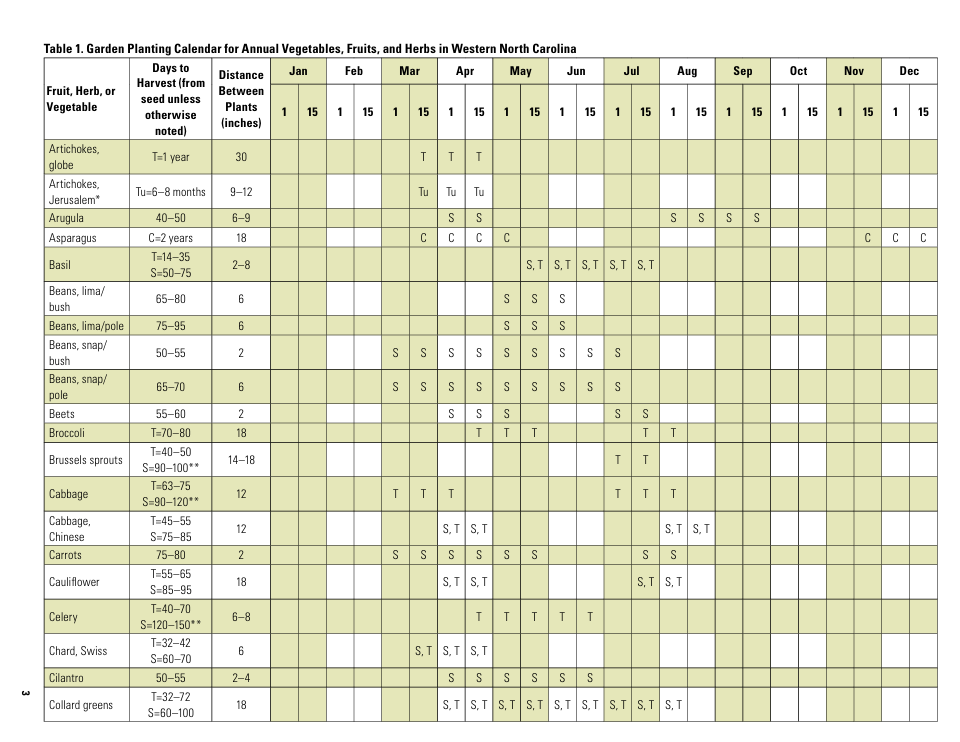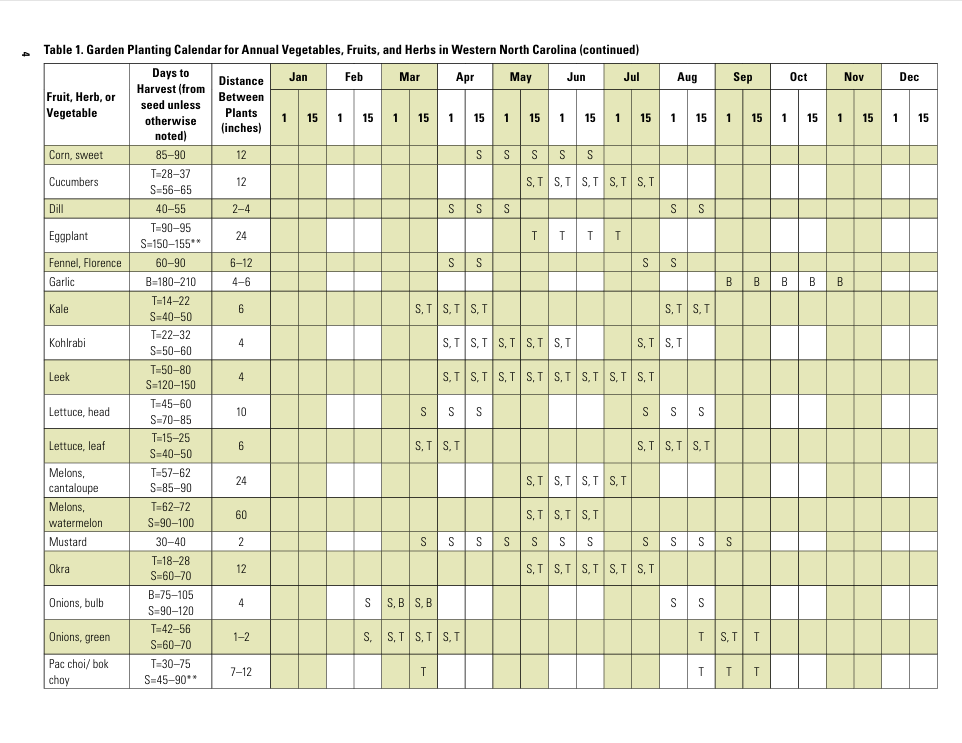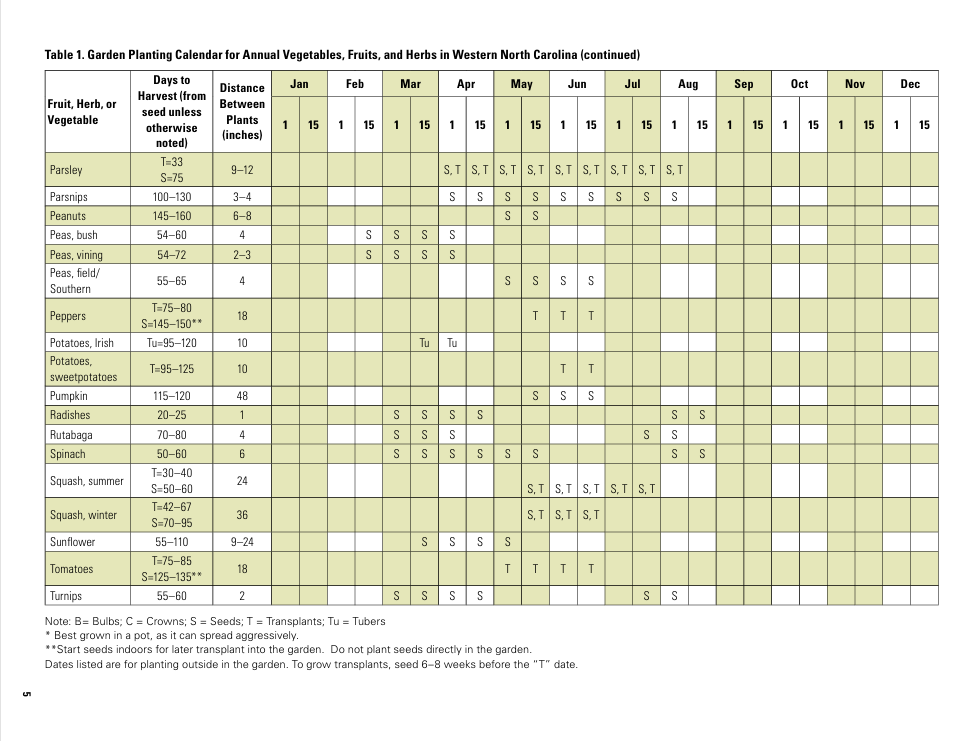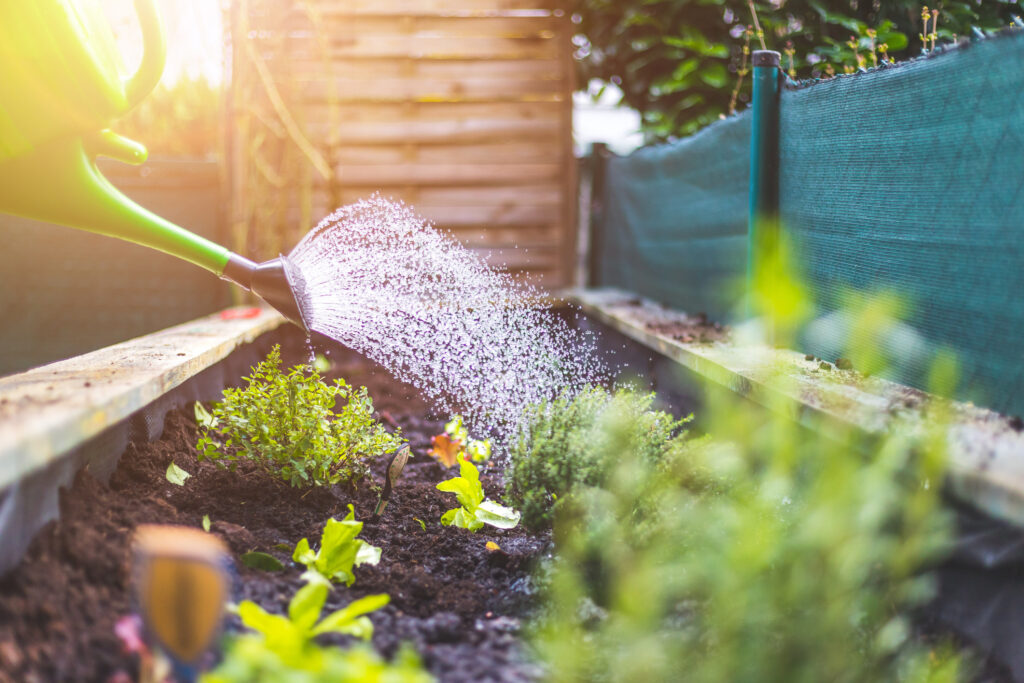
Happy spring! While frosts typically persist until Mother’s Day in Western North Carolina, this is the ideal time to start planning your spring garden in Asheville and the surrounding areas! The next few weeks are a good time to clean up and prep garden beds in advance of planting, and it can be a good time to start seeds or purchase starts.
Whether you’re a seasoned gardener or a first-time planter, knowing the right time to sow and transplant your plants is crucial for a successful growing season. With the region’s varied elevations and microclimates, understanding local planting guidelines will help ensure that your garden thrives throughout the spring and summer months.
Here’s your guide to planting in Western North Carolina:
March: Preparing for the Growing Season and Planting Cool-Season Crops
As the temperatures begin to rise, it’s time to start getting your garden ready for the season. For gardeners in Western North Carolina, March marks the beginning of the planting process.
Early to Mid-March: This is the perfect time to start sowing seeds indoors for warm-season crops such as tomatoes, peppers, and eggplants. Starting seeds indoors will give these crops a head start before they are transplanted outdoors later in the season.
Mid to Late-March: You can also begin planting leafy greens such as kale and broccoli, peas, carrots, and radishes outdoors. These cool-season crops thrive in the early spring and can handle the region’s occasional frost.
April: Sowing Cool-Season Crops, Prepping for Warm-Season and Planting Perennials, Shrubs & Herbs
April is a transitional month in Western North Carolina, where the weather begins to warm up, but there may still be occasional frost. It’s a great time to focus on preparing your garden and starting to transplant warm-season plants once the risk of frost has passed.
- Early to Mid-April: You can begin sowing certain seeds directly into the garden, particularly cool-season crops, including beets, turnips, Mustard greens, and Swiss chard.
Late April: This is the ideal time to start prepping the soil and beds for transplanting your indoor seedlings of tomatoes, peppers, and eggplants into the garden, once the risk of frost has passed. Be sure to check your local frost dates to ensure the timing is right for your area.
April is also a great time to plant flowering perennials and shrubs, such as daylilies, coneflowers, azaleas or hydrangeas, as the soil has warmed up enough to support root growth. These plants will establish themselves throughout the growing season and return year after year. Herbs such as chives, thyme, parsley, oregano, and cilantro also thrive in early spring and can be harvested throughout the season.
May: Sowing & Transplanting Warm-Season Crops and Planting Pollinator-Attractant Annuals
By May, the growing season is in full swing. This is when many gardeners start shifting from cool-season to warm-season plants, and the risk of frost is minimal in most areas.
Early to Mid-May: Direct sow seeds for warm-season crops like beans, corn, and squash. The soil is warm enough for seeds to germinate and grow quickly.
- Mid to Late-May: Direct seed or transplant frost-sensitive plants such as eggplants, tomatoes, okra, peppers and melons. These crops thrive in the warmer temperatures that May brings and will have plenty of time to grow and produce before the cooler months arrive.
Some herbs prefer the warm and sunshine of May, whether you’re growing them in a garden bed or in containers. Consider adding rosemary, basil, lemon balm, mint, and sage to your planting schedule. This is also an ideal time to add a pop of color and also attract pollinators like bees and butterflies with heat-tolerant annual blooms like sunflowers, zinnias, bee balm, and coreopsis.
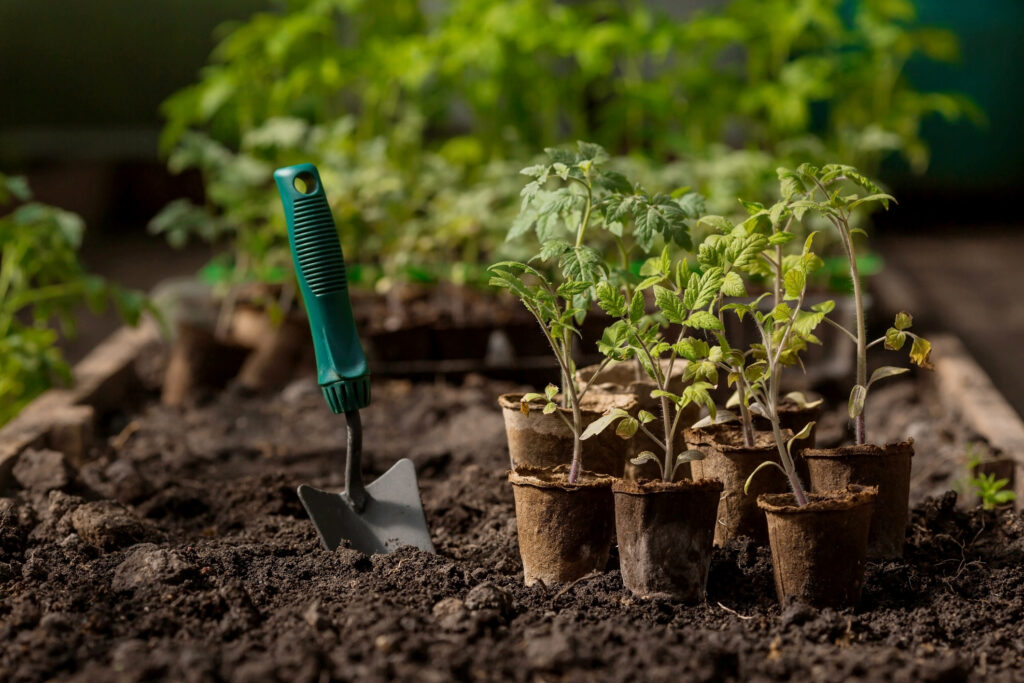
Additional Tips for Western North Carolina Gardeners:
Cool-Season Crops: Don’t forget that cool-season crops such as lettuce, spinach, and other leafy greens can be planted earlier in the season. These crops tolerate the cooler temperatures of early spring and will give you a head start on the harvest.
Soil Preparation: Before planting, make sure your soil is well-drained and enriched with organic matter. This is essential for healthy plant growth, so take the time to amend your soil as needed.
Frost Protection: Late-season frosts can still occur in higher elevations through April, so be prepared to protect tender plants from these chilly nights. Using row covers or frost blankets can help shield young plants from unexpected cold snaps.
- Warm-Season Maintenance: Now that the need for frost protection has passed, the sunshine and warm temperatures introduce new tasks to help keep your garden healthy and thriving. As temperatures rise, it’s essential to keep your plants well-watered. Make sure to water deeply and consistently, especially for newly planted crops, perennials, and transplants. Early morning or late afternoon is the best time to water to avoid evaporation. A layer of mulch around your plants will help retain soil moisture, suppress weeds, and regulate soil temperature.
- Weeding and Pest Control: With the warmer weather comes an increase in weeds and pests. Be proactive about weeding your garden regularly to reduce competition for nutrients and water. Additionally, check for common pests like aphids, slugs, and caterpillars, and use organic pest control methods if needed.
To help you get started, we have included the NC State Extension’s WNC Planting Calendar below. For those who prefer a quick, tangible reference, the NC State Extension Master Gardener Volunteers of Buncombe County have created A Gardening Guide for our Mountains. This guide “provides a complete month-to-month description of what to do (and what not to do), along with tips on invasive species, mulching, composting, and creating bird-and pollinator-friendly habitats,” and can be ordered through their website or picked up at their office located at 49 Mount Carmel Road in Asheville.
Western North Carolina’s diverse climate offers unique challenges and opportunities for gardeners. By understanding the local frost dates, adjusting your planting schedule, and choosing the right crops for the season, you can enjoy a productive and rewarding garden. Whether you’re growing vegetables, flowers, or herbs, following these spring planting guidelines will set you up for a successful growing season. Happy planting, and here’s to a beautiful, bountiful garden this spring!
